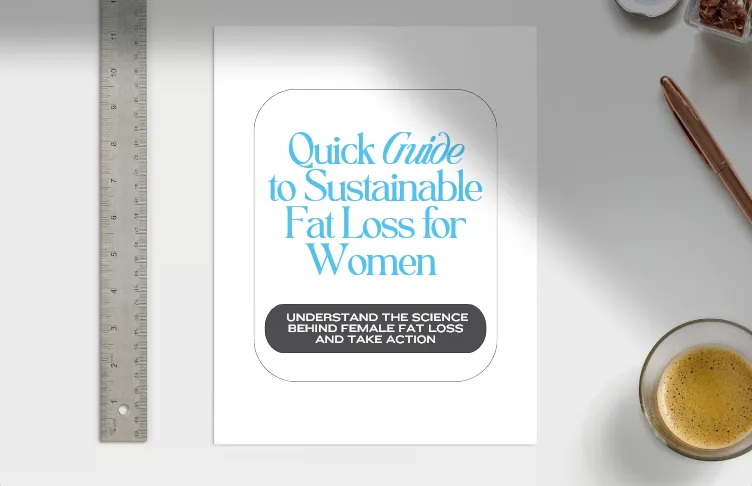
Why Pilates Will Transform Your Strength Training and Everyday Movement
If you're serious about strength training, you already understand the importance of building muscle, improving performance, and staying injury-free. As a performance coach, I’m passionate about making a meaningful impact on your fitness journey.
Pilates, a mindful movement practice, has the power to truly elevate your strength routine and take your results to the next level.
Originally developed in the early 1900s by Joseph Pilates, a German physiotherapist, this exercise modality has its roots in physiotherapy, making Pilates an approach focused on mindful, purposeful movement. This method emphasizes body awareness, control, and endurance, allowing you to deeply understand how your body moves and feels.
Pilates won’t directly build muscle mass—this happens through strength training, where you move muscles under load through their full range of motion. However, Pilates builds body control, teaching you how to persevere through discomfort and complete movements with precision. This foundation enhances your ability to train with weights safely and effectively.
Let’s explore why Pilates deserves a place in your weekly routine.
1. Strengthen Your Core for Every Movement
Pilates isn’t just about working your core—it’s about working it correctly. A proper core exercise requires you to align your head, ribcage, and hips (often referred to as “containers” in Pilates) to create a stacked position. Only from this alignment can you activate your core muscles effectively, without relying on your hip flexors or straining your lower back.

Why This Matters: A strong core is essential for functional movement, supporting your spine and ensuring balance and stability. Pilates strengthens deep stabilizing muscles like the transverse abdominis and pelvic floor, which are often neglected in traditional ab workouts. These muscles enhance posture and make daily tasks like bending or lifting easier and safer.

2. Improve Flexibility and Joint Mobility
Mobility is often overlooked but critical for anyone with fitness goals—whether fat loss, muscle building, or injury rehabilitation.
To build muscle, you need to take it through its full range of motion under load. This requires MOBILITY to safely move between positions and STABILITY to control those movements without injury.
Pilates focuses on elongating and stretching muscles, helping you achieve better flexibility and joint mobility. This ensures you can move safely and effectively during strength training while preventing stiffness from setting in after workouts.
3. Balance Muscle Strength and Correct Imbalances
Muscle imbalances are normal.
Our daily movements often favor one side—like stepping forward with the same foot or using a dominant hand. Over time, this can create strength disparities, leading to discomfort or pain.
Pilates, with its mindful and controlled exercises, helps you notice these imbalances. By working with light resistance, such as body weight or props like balls and bands, Pilates allows you to notice how each side of your body moves and feels.
Addressing muscle imbalances improves posture, reduces overstrain injuries, and helps you move with more ease and alignment in daily life.
4. Recover Smarter, Not Harder
Recovery doesn’t mean staying idle. In fact, your muscles recover best when they move through their full range of motion under light resistance, such as body weight or Pilates props. Pilates offers gentle, low-impact movements that promote circulation, relieve tension, and restore mobility, making it ideal for recovery days.
Adding Pilates to your recovery routine keeps you active, supports muscle repair, and helps you feel refreshed and ready for your next workout.
5. Master Breathing for Better Performance
Everything begins with your breath.
Pilates emphasizes controlled breathing, fostering greater awareness of how your body moves in sync with it. This mindfulness helps you engage your core properly, whether you’re lifting weights or performing daily tasks.
Pilates also teaches the difference between bracing your core for full-body lifts like squats, deadlifts and bench press to stabilize your spine and just activating your core for other movements.
6. Support Posture and Alignment
Modern lifestyles—sitting for long hours, looking at screens—often lead to tight hips, slouched shoulders, and poor posture. Pilates helps counteract these effects by restoring alignment and promoting better posture.
Proper posture doesn’t just make you look confident; it prevents chronic pain and allows your body to move efficiently and comfortably.
How to Add Pilates to Your Routine
Start Slow: Begin with one session per week to familiarize yourself with the movements.
Combine with Strength Days: Use Pilates as a warm-up or cool-down to enhance flexibility and activation.
Pilates and strength training are both necessary for you to achieve your goals. While strength training builds muscle and power, Pilates refines movement, improves posture, and prevents injuries. Together, they create a fitness routine that makes you move and perform better while supporting recovery.



Mail